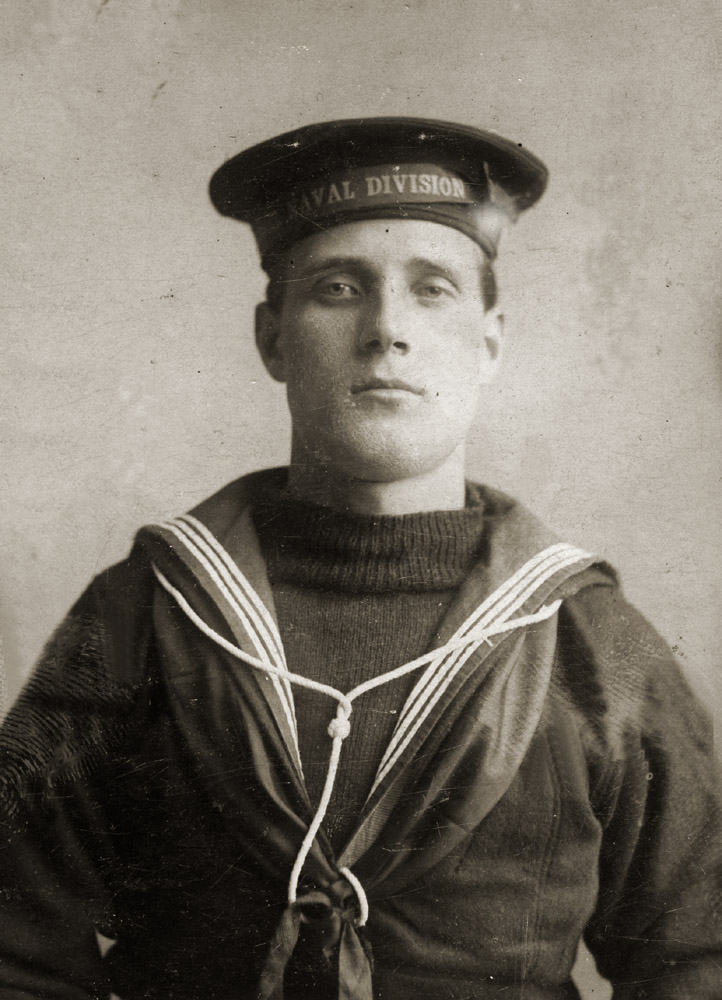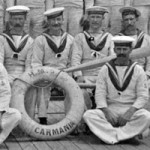Category: WWI
Donald Macdonald, DSM
A Little Extra Hardship in Groningen
A Memorable Sunday in Lewis
A Serious Accident at Cliff
Wartime Enaclete
An Iolaire Survivor
no images were found
Translated from an interview with An Geal, John Maclennan, born 1896 at 15 Kneep and married at 4 Aird, Uig. The Admiralty ship the Iolaire taking servicemen home to Lewis grounded on the Beasts of Holm outside Stornoway, on the 1st of January 1919. More than two hundred men perished. Translated by Maggie Smith.
At the end of December 1918, on leave and travelling back to Lewis with other servicemen from Uig, we planned to arrive home on New Year’s day and surprise the families. Approaching Stornoway Harbour on the Iolaire the mistake was made when we changed course. All it required was less than half a point, it just needed to be slightly to the West. The lighthouse was visible, but the man at the wheel didn’t alter the course when he should have.
We never suspected a thing until she hit, it was so quiet and everything was so normal… Only two people escaped from that part of the ship I was in. One brave man swam ashore with a rope and secured it. When the ship grounded she swung round broadside. I remember moving the rope from the stern to the side, but today I don’t quite know how I managed it. A lot of those around me had lost their mind, particularly the younger men. There were no orders from the officers maybe if… If only the ship had grounded closer to the shore, most of those aboard would have been saved. But the rocks we hit were the furthest point from the shore. Although there had been a strong wind it was behind us. I was able to crawl to safety across that rope. The ship sunk eventually and one man was left clinging to the mast until he was rescued. Only seventy five people made it to the shore.
When I got ashore I was shoeless as I had been resting and had taken them off. A lot of the men had taken their shoes off and were lying down, wherever they could get space to rest their head. Reaching the shore I fell into a bog and lost my socks, then I headed for the nearest house, where a huddle of injured people had gathered. I was injured with cuts on my chest, but I never let on to anyone. It was a frosty night and I walked from Holm to Stornoway.
Seeing a sign for the Post Office I headed in that direction. I heard a woman crying. It was Maga (nighean Seonaid Chalum Tharmoid). Maga had met two Uig men who had been on the boat, Uilleam Dubh (William Maclennan 36 Cliff) and (Tuireag) Malcolm Macritchie 7 Aird. They had mentioned I was on the ship, and as they hadn’t seen me since coming ashore, they had come to the conclusion that I too, had been lost.
British Summer Time and Census Night
William Dearg’s Medals
Interned at Groningen in 1914
 This unidentified sailor with the Naval Division is believed to be one of those interned in Holland in 1914. The picture was taken at Groningen, and comes to us from 10 Mangersta. Is he one of the Uigeachs listed below who spent the war in “HMS Timbertown”? The following was written by Dave Roberts for Uig News; more information about the 106 known internees from Lewis, and the conditions they experienced, are found at Guido Blokland’s comprehensive website.
This unidentified sailor with the Naval Division is believed to be one of those interned in Holland in 1914. The picture was taken at Groningen, and comes to us from 10 Mangersta. Is he one of the Uigeachs listed below who spent the war in “HMS Timbertown”? The following was written by Dave Roberts for Uig News; more information about the 106 known internees from Lewis, and the conditions they experienced, are found at Guido Blokland’s comprehensive website.
On 5 August 1914 the postman delivered buff-coloured envelopes to all the reservists. War had been declared. There was no reluctance to answer the mobilisation call, and those on the Island made their way immediately to Stornoway, thence to Kyle of Lochalsh, and eventually to one of the Channel ports. The most pressing military need at the time was for infantrymen, not for ships’ crews, so the Naval Reservists found themselves issued with a rifle and ten rounds of ammunition. Their training had been as crew for warships, and the handling of big naval guns, not as infantrymen! But on 5 October they were transported to Antwerp in Belgium, via Dunkirk, to attempt to defend the strategic port from the advance of the Kaiser’s Army. The defences were built in the nineteenth century and were no match for the heavy artillery or the devastating fire from the ‘Big Bertha’ mortars. The ill-equipped and inadequately trained Naval Brigades had no chance and held out for less than three days.
They were facing overwhelming odds, and despite orders that they were to defend this strategic deepwater port at all costs, it was obvious that a retreat was necessary. There were also specific orders that on no account should the Naval Division be caught in Antwerp. Eventually the orders came to fall back, and two of the Brigades did so, but for some hours the third remained ignorant of the withdrawal. 3,500 men reached the Burght, crossed the River Scheldt by pontoon bridge and marched to St Niklaas, where they boarded trains and escaped. The other 1,500 men of the First Brigade, consisting of Hawke, Benbow and Collingwood Battalions, finally got their evacuation orders but when they arrived at the river the bridge was no longer in place. Fortunately there were some small boats available for ferrying them across, but valuable time had been lost. They arrived exhausted at St Niklass early on the morning of 9 October.
All the transport had departed and they were forced to continue on foot to St Gillis-Waas. There they discovered that the railway had been blown up, and they were almost completely surrounded by enemy troops. In fact some of the Naval Brigade had already been captured, including John Maclean Ungeshader (Shonnie Gorabhaig), John Buchanan Brenish, John and Angus Maciver Crowlista, and Donald Mackay Valtos. Only three of the Uigeachs who were sent to Antwerp managed to escape that day: they were Kenneth Maciver Geshader, Donald Macritchie Aird and Angus Mackay Valtos. The rest were now facing capture, being wounded or even being killed by the fierce bombardment they were suffering. Commodore Henderson was in charge and the lives of his men depended on him making the right decision. Reluctantly he chose the safest option: rather than become prisoners of war, they would cross the border. Once they were on Dutch soil, and had surrendered their weapons to the Dutch Army, they became internees in the neutral country of Holland.
The Uig contingent were: Malcolm and Murdo Buchanan (cousins) Brenish; Angus Morrison Islivig; Angus Macdonald Geshader; Donald Morrison, John William Macleod, Angus Macaulay, and James Morrison Valtos; Donald Maclennan Cliff; Kenneth Nicolson Crowlista and Norman Macritchie Aird. Out of the twenty Uigeachs who were sent to Antwerp only Kenneth Maciver Geshader, Donald Macritchie Aird, and Angus Mackay Valtos avoided capture or internment.


